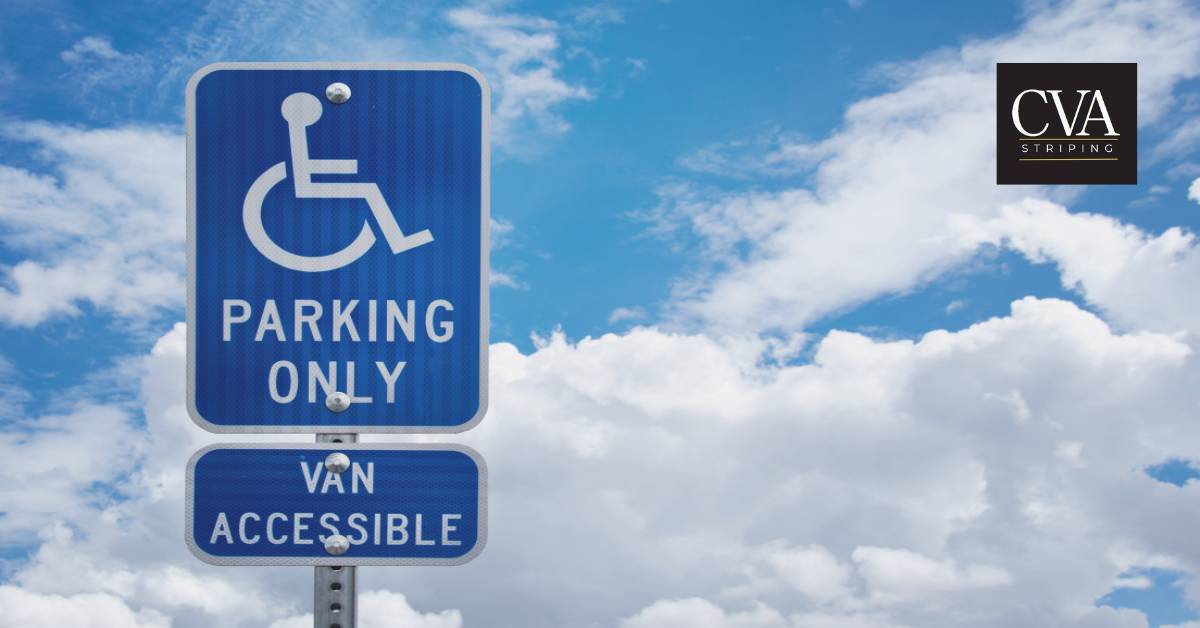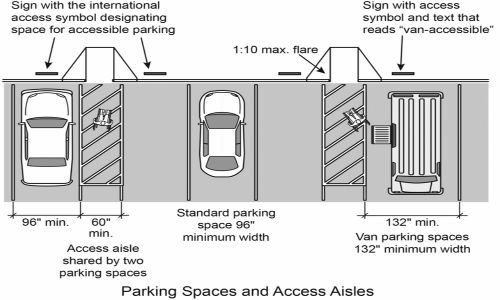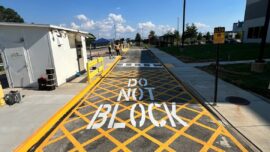
Top Benefits of Handicap Parking: Why Every Facility Needs Handicap Parking Spots
At CVA Line Striping, we believe that creating an inclusive environment starts with accessible parking. Handicapped parking spots are more than just designated spaces. They are essential for ensuring that everyone, including individuals with disabilities, can access facilities comfortably and safely.
In this blog, we’ll explore the top benefits of handicap parking and explain why every facility should prioritize these spots. From enhancing accessibility and safety to promoting inclusivity and legal compliance, handicapped parking spots play a vital role in making your facility welcoming and accessible to all. Let’s dive into the key reasons why handicapped parking is so important and how it can positively impact your community.
What are the Benefits of Handicap Parking
Handicap parking spots are more than just a convenience—they are vital for creating an inclusive environment that welcomes everyone, especially those with disabilities. These spots not only enhance accessibility but also boost safety, ensure legal compliance, and significantly increase overall customer satisfaction. Let’s dive into the specific benefits that make handicapped parking so essential.
Improved Accessibility for People with Disabilities
Handicap parking spots are more than just a convenience—they are vital for creating an inclusive environment that welcomes everyone, especially those with disabilities. These spots not only enhance accessibility but also boost safety, ensure legal compliance, and significantly increase overall customer satisfaction. Let’s dive into the specific benefits that make handicapped parking so essential.
Legal Compliance and Regulations
Providing handicapped parking spots ensures compliance with legal requirements such as the Americans with Disabilities Act (ADA). Failure to comply with these regulations can result in significant fines and legal repercussions. By adhering to these standards, facilities demonstrate their commitment to accessibility and avoid legal issues. This also helps maintain a positive relationship with regulatory bodies.
Promoting Inclusivity and Equal Opportunities
Handicap parking promotes inclusivity and equal opportunities by ensuring that people with disabilities have the same access to facilities as everyone else. This commitment to inclusivity sends a positive message to the community, showing that the facility values all its visitors and strives to accommodate their needs. Such efforts can enhance community support and goodwill.
Enhanced Safety for Disabled Individuals
Handicap parking spots enhance safety for disabled individuals by providing a designated area that minimizes the risk of accidents. These spots are designed with extra space to accommodate mobility aids like wheelchairs and walkers, reducing the risk of injury when entering or exiting a vehicle. This additional space ensures a safer environment for all users.
Convenience for Caregivers and Families
Handicap parking spots offer convenience for caregivers and families assisting individuals with disabilities. These spaces are often larger and closer to entrances, making it easier to load and unload necessary equipment. This added convenience supports caregivers in their role, making things less stressful. It also allows for smoother and quicker transitions from car to destination.
Increased Customer Satisfaction and Loyalty
Facilities that provide adequate handicap parking spots can see increased customer satisfaction and loyalty. Customers appreciate the thoughtfulness and accessibility, leading to positive experiences and repeat visits. This can be particularly beneficial for businesses looking to build a loyal customer base. Satisfied customers are more likely to recommend your facility to others.
Positive Business Reputation and Image
A positive business reputation and image can be enhanced by providing handicap parking spots. This demonstrates a commitment to accessibility and inclusivity, which can attract a broader customer base and enhance the facility’s public image. Businesses known for their inclusive practices often enjoy better community support. This can lead to greater community engagement and business success.
Better Utilization of Parking Space
Designating specific areas for handicapped parking ensures better utilization of parking space. These spots are strategically placed to maximize accessibility and convenience. Properly marking and maintaining handicap parking can improve the overall efficiency of the parking lot. Efficient use of space benefits both the facility and its users.
Encouraging Mobility and Independence for Disabled Persons
Handicap parking encourages mobility and independence for disabled persons by providing them with the means to access various facilities on their own. This empowerment can significantly improve the quality of life for individuals with disabilities, promoting greater self-sufficiency. Having accessible parking options helps individuals feel more independent and confident in their daily activities.
How to Implement Handicap Parking in Your Facility?
Implementing handicapped parking in your facility involves careful planning and adherence to regulations. From assessing the need to designing the layout and maintaining the spaces, each step is vital in providing a welcoming environment for all visitors. By taking a systematic approach, you can create a parking area that is both compliant with legal requirements and accessible to everyone.
Assessing the Need for Handicap Parking Spots
Assessing the need for handicapped parking spots is the first step in implementation. Start by evaluating the number of visitors with disabilities who frequently use your facility. This can be done through observation, surveys, or analyzing visitor data. Consider the layout of your parking lot, including the proximity of existing parking spaces to building entrances.
Ensure there are enough spots to meet demand, taking into account the guidelines set forth by the ADA. The ADA generally recommends that at least one handicapped parking space be provided for every 25 standard parking spaces. By understanding your facility’s specific needs, you can plan effectively to meet both regulatory requirements and the needs of your visitors.
Design and Layout of Handicap Parking Spots

The design and layout of handicap parking spots should adhere to ADA guidelines to ensure they are accessible and user-friendly. This includes mak
ing sure the spaces are wide enough to accommodate vehicles with ramps or lifts, typically at least 8 feet wide, with an adjacent access aisle of at least 5 feet for standard spaces and 8 feet for van-access
ible spaces. These spots should be located near accessible entrances to minimize the distance that individuals with disabilities need to travel.
Clear signage is crucial; each handicap parking spot should have a sign displaying the International Symbol of Accessibility mounted at least 60 inches above the ground. Proper markings, including blue and white paint, should be used to delineate the parking spaces and access aisles, ensuring they are easily visible to all drivers.
Maintenance and Monitoring of Handicap Parking
Regular maintenance and monitoring of handicap parking spots ensure they remain functional and accessible. This includes tasks such as repainting faded lines, repairing any damage to the pavement, and ensuring that the signage remains visible and in good condition. Regularly check the spaces for any obstacles or debris that might hinder accessibility.
Monitoring the use of these spaces is also important to prevent misuse; consider implementing a system where staff or security personnel periodically check that vehicles parked in handicap spots display the appropriate placards or plates. Consistent upkeep demonstrates a commitment to accessibility and keeps the facility in compliance with regulations. Additionally, it reassures visitors that their needs are taken seriously, which can enhance their overall experience and satisfaction with your facility.
FAQs About Handicap Parking
What Do the Different Color Handicap Signs Mean?
Different-colored handicap signs can indicate various designations. For example, blue signs typically denote standard handicapped parking, while other colors, like yellow, may signify temporary or specific use.
How to Apply for a Handicap Parking Permit?
To apply for a handicap parking permit, complete the Disabled Parking Plates or Placard Application (MED 10) and submit it by mail to the Virginia DMV or in person at any DMV service center. The application must include a $5 fee and a disability certification from an authorized medical professional. If you already have a permanent placard, a new certification is not required for a license plate.
What Are the Penalties for Misusing Handicap Parking Spots?
Misusing handicap parking spots can result in significant penalties. Parking a vehicle in a space reserved for persons with disabilities or in a striped access aisle in violation of this section is punishable by a fine ranging from $100 to $500.
Are Handicap Parking Spots Different in Private vs. Public Facilities?
Handicap parking spots in private and public facilities must adhere to the same ADA regulations, although there may be additional local requirements. Ensuring compliance in both types of facilities is crucial for legal and accessibility reasons.
What to Do If You See Someone Illegally Parked in a Handicap Spot?
If you see someone illegally parked in a handicapped spot, you can report it to facility management or local authorities. Providing details like the vehicle’s license plate number and location helps address the misuse and keep the spots available for those who need them.
Can Temporary Disabilities Qualify for Handicap Parking?
Yes, temporary disabilities can qualify for handicapped parking. The Department of Motor Vehicles (DMV) offers temporary parking placards to individuals with temporary conditions that limit or impair mobility. These placards allow the holder to use designated handicapped parking spaces while their condition persists.
How Many Handicap Parking Spots Are Required by Law?
The number of required handicapped parking spots varies depending on the total number of parking spaces in a facility. ADA guidelines specify the minimum number to ensure adequate accessibility. Checking these regulations ensures your facility remains compliant.



